Diminutive By Size But Not By Nature, Meet Nature’s Tiny Avian Marvel!

A diminutive falcon characterized by its small size and distinctive appearance. It is comparable in size to a shrike but has a chunkier build.
Meet the Pygmy Falcon:
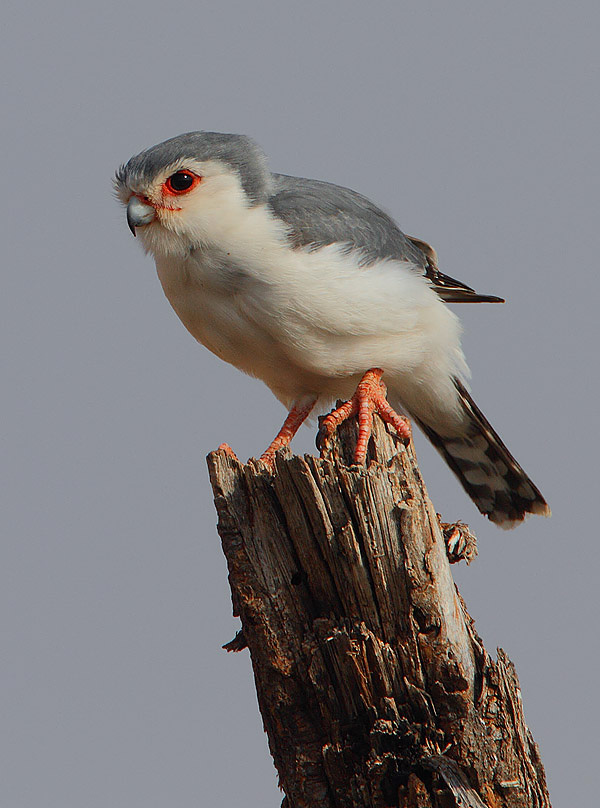
Appearance: The Pygmy Falcon (Polihierax semitorquatus), also known as the African Pygmy Falcon showcase distinct physical characteristics. They possess a white underside and face, with a gray upper body. Their flight feathers exhibit black and white spotting, with more black on the upper side and more white on the lower side. The tail is barred with black and white. In terms of size, pattern, and their habit of perching upright on exposed branches or treetops, Pygmy Falcons share resemblances with some shrikes. Their call is characterized by a high-pitched “kikiKIK” (in Kenya) or a series of “chip-chip” and “kik-kik-kik-kik” sounds (in southern Africa).

Females sport a chestnut-colored back, and there are prominent white “eye spots” on the nape.
Relate reading:
– As Strikingly Feathered Bird Radiating A Palette Of Color And Communal Gгасe!
Juvenile falcons differ slightly, featuring a brown back and a subtle rufous wash on the breast.

Distribution / Range: This bird is a species native to eastern and southern Africa. It holds the distinction of being the smallest raptor on the African continent. This diminutive falcon is a diurnal carnivore with insectivorous dietary preferences. It exhibits both arboreal and terrestrial behavior and practices monogamy in its mating habits. These small raptors are social birds and are non-migratory.
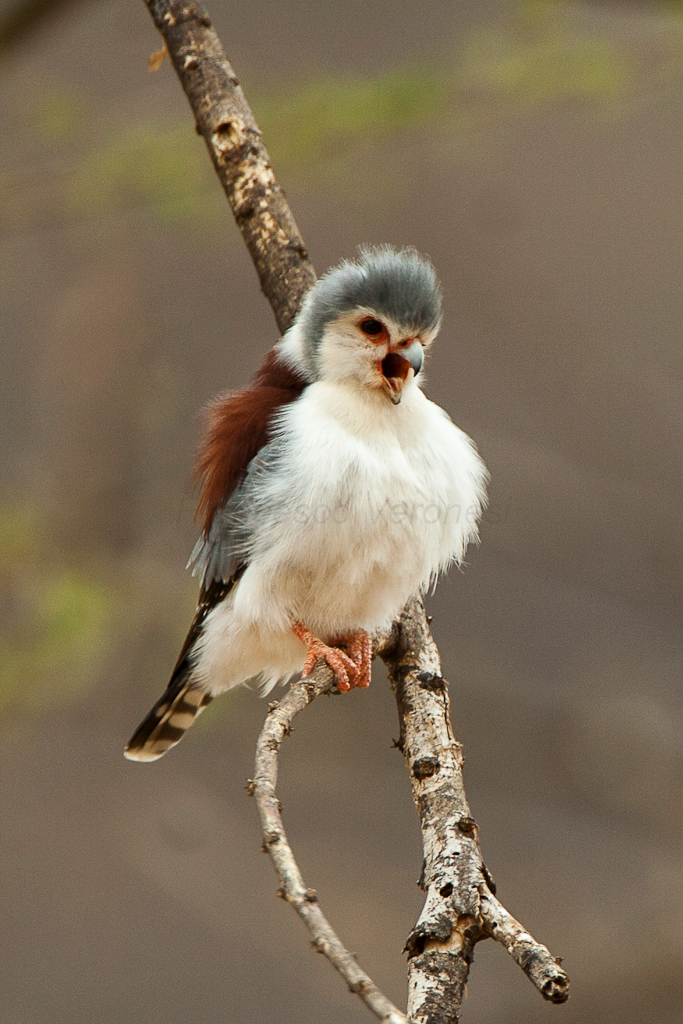
Habitat: These birds inhabit dry bush environments, with two recognized subspecies: P. s. castanonotus, which resides from South Sudan to Somalia and south to Uganda and Tanzania; and P. s. semitorquatus, found from Angola to northern South Africa.
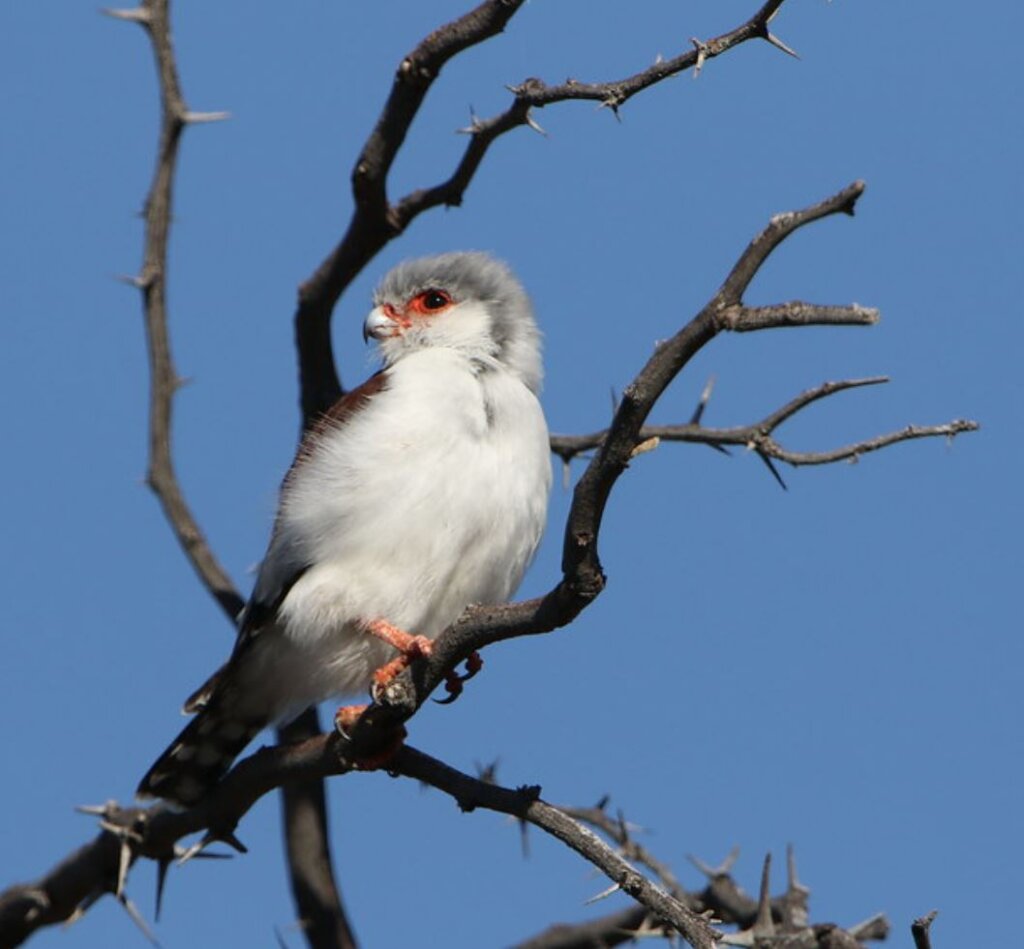
Diet and Behavior: Pygmy Falcons primarily prey on reptiles and insects, although they occasionally target small birds and rodents. Their hunting strategy involves perching and swooping down on potential prey. Interestingly, Kalahari tree skinks have learned to detect approaching Pygmy Falcons by eavesdropping on sociable weavers’ warning calls and subsequently seeking cover.
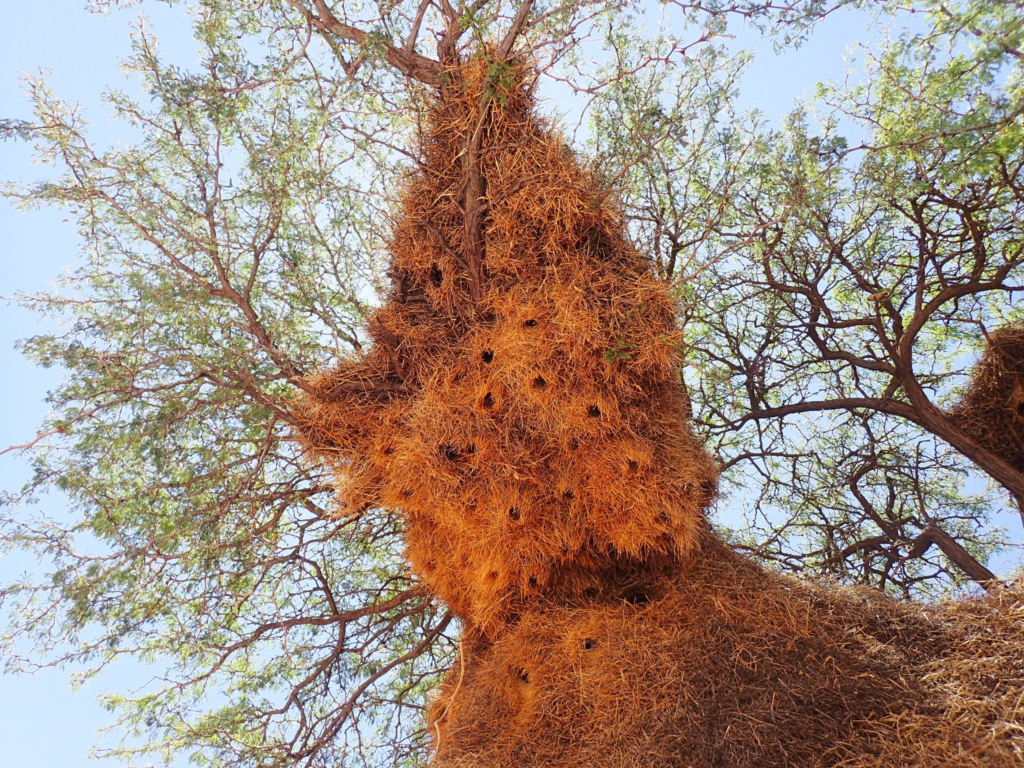
Mating Habits: In Kenya, Pygmy Falcons nest within white-headed buffalo weaver nests, sharing their habitat. In southern Africa, they often nest around red-billed buffalo weaver colonies and predominantly use vacant chambers within sociable weaver nests. Despite their preference for bird-eating and their larger size compared to sociable weavers, Pygmy Falcons tend to leave sociable weavers unharmed, although they may occasionally prey on nestlings or adults. They also mark their nests with faecal matter, possibly as a deterrent against snakes and ectoparasites or as a form of communication with conspecifics. Faecal matter at the entrance may signal to other falcons that the colony is occupied.

Occasionally, Pygmy Falcon territories host groups of more than two adults tending to nestlings. This behavior could serve purposes such as defense, co-operative polyandry, delayed offspring dispersal and cooperation, or thermoregulation, as groups may nest further inside sociable weaver nests for better insulation in winter.
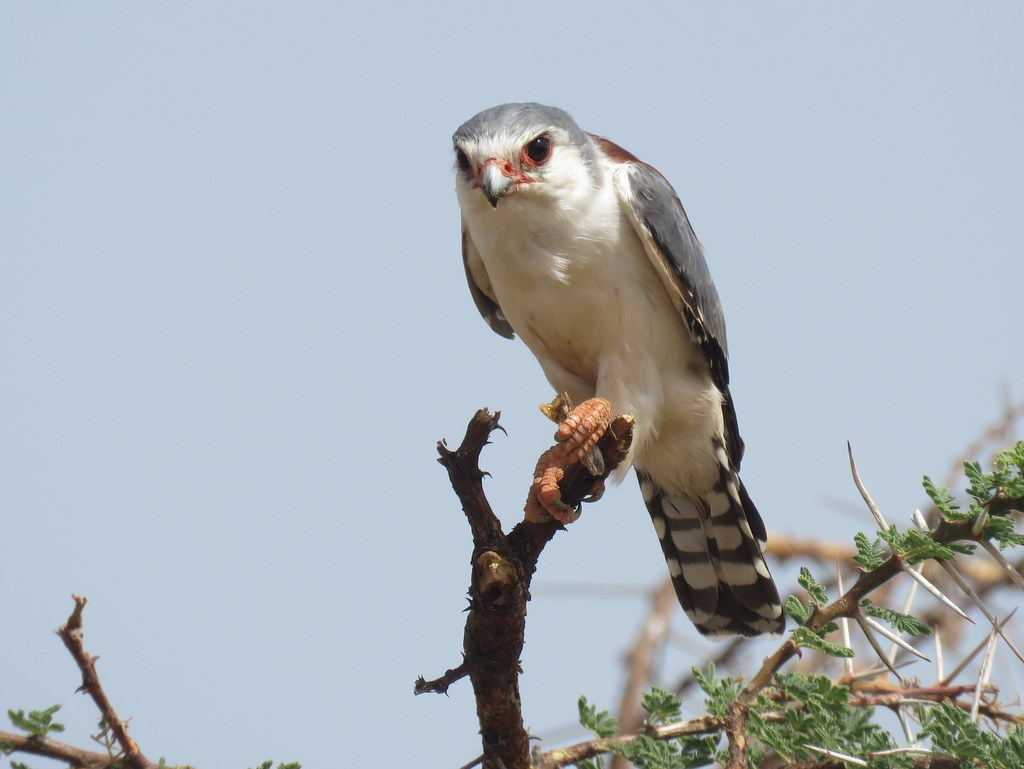
Population and Conservation: As for their conservation status, Pygmy Falcons are not currently threatened and fall under the category of “Least Concern.” While they remain common in many parts of their range, there is evidence of population decline in some areas.
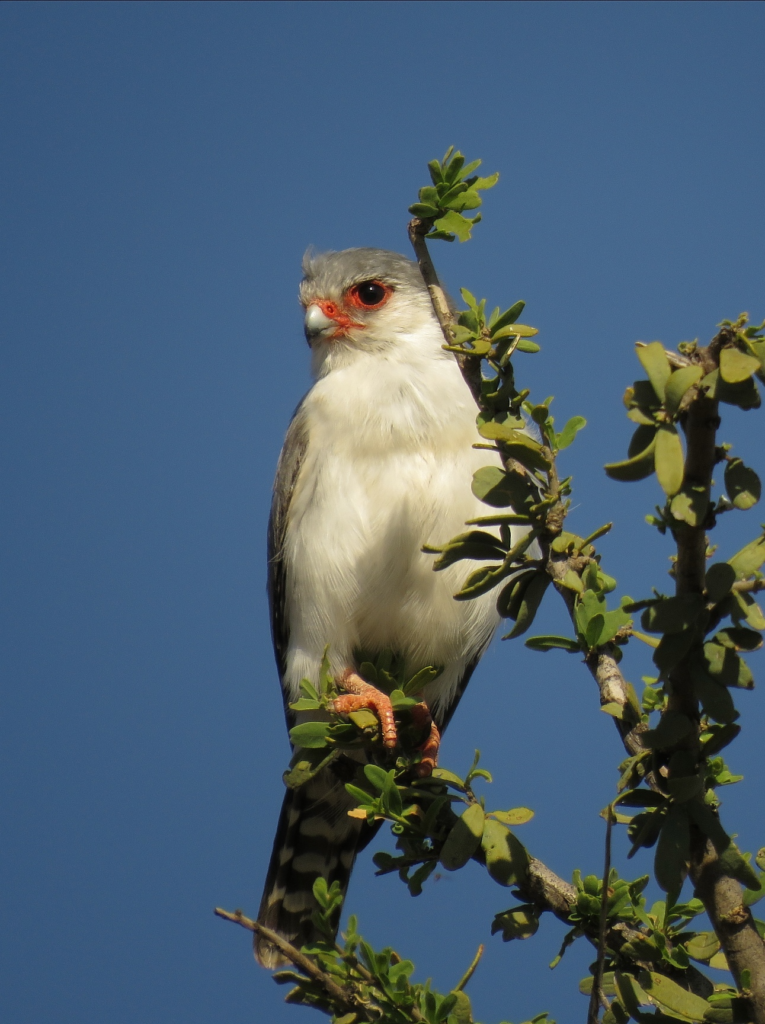
Watch this bird go about his daily activities:
This article uses material from Wikipedia.org which is licensed under the GNU Free Documentation License via Copyright Wikipedia. Images on this page are the sole property of the photographers (unless marked as Public Domain). Please read the license and or contact the photographers directly before using them for any purpose. Thank you all.
On The Hunt For Honey? Let This Bird Lead the Way!
Please SHARE this video with all your bird-loving friends and family.






